Inbox and Environment News: Issue 269
June 26 - July 2, 2016: Issue 269
Drone Data Of Collaroy After The June 2016 East Coast Low
Floating Landcare at Elvina Bay
Monday 4th July 2016Meet at: Church Point Wharf 8:15am and return 2:00pm Join in the activities of the Rocky Point/Elvina Bay Bushcare Groups for a morning of controlling Asparagus Fern, Yuccas, Aloe vera and a few other pesky garden escapes. We will be working beneath the Pittwater Spotted Gums with lovely views of the Bay to be enjoyed from this Bushcare site! Last year great progress was made at our Floating Landcare visit however some much needed follow up is due and some extra hands would be most welcome. Return transport on the Church Point Ferry will be included as will morning tea, lunch, tools and gloves. RSVP is essential by Wednesday 29th June 2016. To RSVP email your name and phone number to floatinglandcare@gmail.com or call Rebecca Mooy at Greater Sydney Local Land Services on 02 4724 2120. Confirmation details will be sent to all volunteers via email on 30.6.2016.
Biodiversity Legislation Review
by EDO NSWThe NSW Government has released a new draft Biodiversity Conservation Bill, a Local Land Services Amendment Bill, and information about proposed land clearing codes.
The proposed law and policy package is a serious retrograde step as it involves removing many of NSW’s long-held environmental protections.
Public submissions on the package close on Tuesday 28 June 2016.Below you’ll find information on how you can have a say about the proposed changes, resources to help you understand what the changes mean, and our analysis and recommendations on how the laws can be improved to protect NSW’s biodiversity.
The 2016 NSW Biodiversity Reforms: 6 Things You Need To Know
By EDO NSW Policy and Law Reform Director Rachel Walmsley9 June 2016
You may have heard that the NSW Government has proposed a legislative and policy package that removes many of NSW’s long-held environmental protections. If you are having trouble navigating the many reform documents, EDO NSW has identified six key issues you should know about.
These reforms propose significant and complex changes to laws and policies designed to regulate land clearing and protect our biodiversity. The Government has put 25 documents – around 657 pages – on public exhibition.
If you don’t have the time or inclination to trawl through all these complicated documents, but are wondering what the reforms may mean for the NSW environment, EDO NSW has summarised six key issues you may like to know about, in addition to our top 10 concerns with the reforms published on 13 May 2016. Read online below, or download details of all 6 issues as a PDF.
Check out our 6 issues below and find out how you can get involved.
1. Land clearing and the rationale for reform
The NSW government has said the reform package is needed because our current vegetation and land clearing laws are not working.
We disagree. The current regime, based on the Native Vegetation Act 2003 and the scientific methodology that underpins it, has reduced land clearing, while also giving farmers and landholders freedom to clear land that is not environmentally sensitive.
The current system worked well – until funding cuts caused delays in land clearing approvals. But this doesn’t mean the current laws are ineffective, merely that the system has not been resourced to work effectively.
2. Offsets and ecologically sustainable development
According to the information on public exhibition, a key goal of the new laws is to ‘facilitate’ ecologically sustainable development (ESD), and the primary way of doing this is by expanding the biodiversity offset market (ie, the biodiversity impacts of clearing can be offset by managing vegetation elsewhere).
Our analysis suggests that the proposed reforms do not satisfy all the principles of ecologically sustainable development:
The precautionary principle: The proposed regime has no effective safety net for avoiding ‘serious or irreversible’ damage.
Inter-generational equity: Given that the proposed regime can allow local extinctions and irreversible impacts, it is unlikely to achieve equity for future generations.
Conservation of biological diversity and ecological integrity: The proposed regime does not treat biodiversity conservation as a fundamental consideration, as required under ESD.
Improved valuation, pricing and incentive mechanisms: The proposed market-based offset scheme has unclear goals and does not effectively value ecosystem services and biodiversity – both necessary foundations for a well-functioning market mechanism. Also, the model on which the offset mechanism is based is arguably the weakest one available.Read more »
3. Private land conservation and funding
The reform package comes with a funding commitment for $240 million over five years to support private land conservation, with $70 million each subsequent year depending on performance reviews. Funds would be administered by a new Biodiversity Conservation Trust guided by a Biodiversity Conservation Investment Strategy.
We strongly support incentives for environmental stewardship and payments for landholders to manage land for conservation, and welcome the proposed investment. However, we are concerned that the system proposed relies too heavily on government funding, which can be subject to short-term imperatives – rather than on long-term protections enshrined in law.
4. Saving our species
We know that biodiversity in NSW is on the decline. Will the proposed reform package do anything to stop this decline? When you examine the overall reform package, it appears not.
The proposed regime has no effective safety net for avoiding ‘serious or irreversible’ damage. And while the proposed Biodiversity Conservation Bill retains many of the threatened species provisions of current laws, such as listing threatened species, the proposed Local Land Services Bill increases known threats to those species. These two key parts of the package are therefore in conflict.
There is also scant information about how clearing of native vegetation will be assessed and regulated in urban areas. The increased use of biodiversity offsetting is likely to allow more clearing to take place in urban areas, even those close to important or sensitive native ecosystems.Read more »
5. Equity?
The word ‘equity’ has appeared often during this reform process. But how fair are the proposed reforms? We explore three examples.
Miners and farmers: NSW Farmers have pointed out that their broadscale land clearing is currently restrained under Native Vegetation Act, while the mine next door can clear significant vegetation under different rules. We have consistently argued that a way to create equity in this case is to apply the same standard to all development - that development must maintain or improve environmental outcomes. The proposed system does not apply this crucial standard.
Current and future generations: The proposed reform package has no effective safety net for avoiding ‘serious or irreversible’ environmental damage. Also, we predict that the proposed system will lead to more land clearing, with carbon implications: future generations will need to dedicate greater resources to meeting carbon emission reduction targets to mitigate dangerous climate change.
Private and public interest: Under the proposed reforms, there will be less information on public registers compared to current laws, particularly in relation to land clearing. It will therefore be difficult for communities to analyse environmental outcomes and engage in the public interest.
6. Recommendations for effective biodiversity laws
Rewriting our biodiversity laws is a once-in-a-generation opportunity to put in place laws that will actually address the most significant threats to biodiversity. EDO NSW has come up with ten recommendations for making our biodiversity laws effective.
To be effective, biodiversity laws should:
Be designed to prevent extinction.
Apply a ‘maintain or improve environmental outcomes’ standard to all development.
Address key threats such as broadscale land clearing of remnant vegetation and climate change.
Establish a NSW Environment Commission or a Biodiversity Commissioner to provide advice and oversight.
Mandate the use of leading practice scientifically robust assessment tools.
Invest in private land conservation over the longer term.
Clearly require comprehensive data, monitoring, reporting on condition and trends (environmental accounts).
Limit indirect offsetting.
Commit to compliance and enforcement.
Properly resource regional natural resource management bodies to work with landholders, have expertise to do assessments and make natural resource management plans that relate to clear targets.
Proposed Biodiversity Conservation Reform Package
NSW Government Dept. of Environment and HeritageDraft Biodiversity Conservation Bill (PDF, 755KB)
Draft Local Land Services Amendment Bill (PDF, 394KB)The submission guides provide detailed information for members of the public to provide constructive feedback. The guides contain specific consultation questions that can help to inform the development of the reforms.
Simplifying Land Management submission guideNative Vegetation Regulatory Map submission guideEcologically Sustainable Development submission guideProtecting Native Plants and Animals submission guidePrivate Land Conservation submission guideDocuments at: www.landmanagement.nsw.gov.au/have-your-say
Written submissions can be submitted online using the form below or posted to:
Biodiversity Reforms - Have Your SayPO Box A290 Sydney South NSW 1232
The public consultation period ends on 28 June 2016 at 5pm.
When will the land management and biodiversity conservation reforms begin?The government aims to introduce the legislation into the Parliament in October 2016.
Subject to Parliament passing the proposed legislation, the government will commence the new laws in two stages in 2017. The government plans to commence some enabling provisions in January 2017.
Further consultation on more detailed components of the package will take place between now and the commencement of the proposed legislation including:
making the Native Vegetation Regulatory Map available and providing landholders with an opportunity to seek a formal review of the map for their property if they believe it has been mapped incorrectlyexhibiting a draft SEPP (Urban Tree Removal) by the end of 2016exhibiting draft instruments such as the Biodiversity Assessment Method and the Land Management Codes from early 2017.
Following these preliminary steps, the government plans to start the full legislative changes from 1 July 2017.
NPWS Says Give Seals Space To Recover And Rest
Media release: 21 June 2016
It is seal season in NSW and the National Parks and Wildlife Service (NPWS) are reminding people to give them the space they deserve to rest, digest and recover when they haul out of the ocean along our coastline.
NPWS Cetacean expert Geoff Ross said that while it is great news that fur seal populations are increasing in Australian waters, it does mean we are more likely to see sick or injured seals.
"Hauling out is a natural habit of these sea dwelling mammals and the vast majority of seals we see laying on rock shelves or beaches are just resting or digesting a belly full of fish," Mr Ross said.
"However some may be sick or injured and will haul out to rest and recover from whatever their ailment might be.
"In many cases these highly resilient animals can recover on their own without human intervention, even from what appear to be horrific injuries.
"As a result, it is important that these animals are reported to either NPWS or ORRCA so we can monitor them in the first instance and assess their ongoing condition before considering intervening.
"Through years of experience, wildlife experts including NPWS, ORRCA and Taronga Zoo have learnt that this period of observation is better than subjecting the seal to the extreme stress of capture especially if the animal is recovering from illness," Mr Ross said.
NPWS and ORRCA are currently monitoring a number of seals along the NSW coastline.
"The recent storms have no doubt resulted in an increase in the number of seals we are currently monitoring, including one at McCauleys Beach in Bulli," Mr Ross added.
"The juvenile New Zealand fur seal at Bulli has been continuously monitored by ORRCA and NPWS since it was first reported.
"The animal has also been assessed by a local veterinarian who is highly experienced in treating marine mammals, and although the seal appears to be a bit underweight and has a bite mark resulting from a cookie cutter shark, the injury is showing signs of healing.
"Cookie cutter bites are not uncommon for seals and ORRCA and the NPWS agree with veterinarian advice that the best medicine for now is rest and to continue monitoring to ensure its long term wellbeing.
"During this time, it is really important that people give these animals the space and time to fully rest and recover.
"As a wild animal, particularly if it is injured or unwell, it considers humans and dogs as a threat and will cause it distress, especially if people walk between the seal and the water," said Mr Ross.
For their own safety and the animal's welfare, the NSW approach distances stipulate people should not be closer than 40 metres to a seal when the animal is on land, as indicated by the warning signs in place. In the water, do not approach closer than 10 metres and stay at least 80 metres from seal pups at all times.
"We always need to give these hardy animals every chance to continue surviving in the wild, with as minimal interference from humans as possible.
"And remember, seals can move very quickly on land and have sharp teeth. Even if it is an off leash dog beach, dogs must be kept on leads near seals and people must adhere to the approach distances," Mr Ross said.
If you are concerned about a seal or any marine mammal please call NPWS or the licensed volunteers at the Organisation for the Rescue and Research of Cetaceans in Australia (ORRCA) on 9415 3333.
Heat Sickens Corals In Global Bleaching Event
June 20, 2016: University of Queensland/James Cook UniversityDeath is only one possible outcome from coral bleaching caused by rising sea temperatures due to global warming. Australian scientists report that many surviving corals affected by mass bleaching from high sea temperatures on the northern Great Barrier Reef are the sickest they have ever seen.
"We measured the condition of surviving corals as part of our extensive underwater surveys of Australia's worst ever bleaching event. We found that coral bleaching has affected 93% of the Great Barrier Reef. While the central and southern regions have escaped with minor damage, nearly half of the corals have been killed by mass bleaching in the northern region," says Professor Terry Hughes from the ARC Centre of Excellence for Coral Reef Studies at James Cook University (JCU) in Townsville, Queensland.
"Normally when bleaching kills corals it is a slow death, that progresses steadily when temperatures remain high," says Associate Professor Bill Leggat, also from the ARC Centre at JCU.
"The corals usually rely on mechanisms that help them fight and counteract the damage but this time, on some reefs, it looks like they have died very quickly.
Corals depend upon algae that live within their tissues. These algae, called zooxanthellae, utilise light to generate sugar and nutrients, which are transported to the coral host. It is this energy that allows corals to grow and produce reefs. The partnership between corals and the microscopic algae (zooxanthellae) that lives in their tissues breaks down when temperatures are too high, causing coral bleaching. For corals to recover they need the tissues to remain intact while the remaining zooxanthellae slowly repopulate the tissues.
"Healthy corals have between one and two million zooxanthellae per square centimetre," says Leggat. "During past bleaching events, these numbers have dropped to about 200,000 cells per square centimetre. Now we are finding in this very severe bleaching event that some corals have no zooxanthallae remaining in their tissues at all."
The scientists found that severely bleached corals had an average of only 4,000 algae per square centimetre. This amount is 500 times less than in a healthy coral and 50 times less than reported for corals that survived previous bleaching events. This profound loss of algae means that many of the corals that have bleached, have little chance of recovering, because they have no zooxanthellae left to repopulate the coral tissue."These corals are amongst the most damaged I have seen," says Dr. Leggat.
"For some surviving corals in the Northern Great Barrier Reef, over 50% of the coral cells are dead. In some regions the corals were so badly damaged that we were unable to study their tissue because it was rotting away."
Tragically, the ongoing damage from bleaching has been highest in the northern 700km of the Great Barrier Reef all the way up to Papua New Guinea, the most remote and -- until now -- the most pristine section of the Great Barrier Reef," says Professor John Pandolfi from the ARC Centre at the University of Queensland.
Given the extent of morality and the damage observed to individual corals it is vital to understand the recovery processes of bleached coral. Even if they recover their color, scientists predict that the surviving corals will show other longer-term symptoms, including reduced growth rates and lower reproduction.
The above is reprinted from materials provided by ARC Centre of Excellence in Coral Reef Studies.
Wet Weather Welcomes Winter
22 Jun 2016: DPIThe wet start to winter has significantly changed the outlook for primary producers across the state.
Department of Primary Industries (DPI) Seasonal Conditions Coordinator Ian McGowen said following the extended hot, dry autumn the rainfall received during late May and early June has made a vast difference across the landscape.
“Late May provided above average rainfall across 68 per cent of the state covering the western, southern and central areas,” Mr McGowen said.“Widespread follow-up rainfall was received in early June across inland NSW and an east coast low produced heavy rainfall and flooding across coastal areas and the adjacent ranges.
“During May pasture growth across most of inland NSW had improved dramatically as a result of the rainfall and warm temperatures. Annual and perennial pastures across western, southern and central NSW responded well to conditions in late May, with good establishment of newly sown pastures.
“Relative to historical records, May pasture growth was above average across areas of the far west, central west, Riverina, far south and the central and southern tablelands, providing valuable winter feed.
“Stock condition remains reasonably good, with supplementary feeding being reduced as pasture and forage crop production increases.
“Grazing of dual purpose cereals and canola has commenced, although growth has slowed with the onset of frosts and cooler wet weather in late May and early June.
“Sowing of most winter crops is nearly completed, with some late planting of cereals and chickpeas continuing in north western NSW following the early June rainfall.
“The wet conditions have restricted early weed control and topdressing. Weed control now remains a priority for growers due to the lack of control opportunities prior to sowing.
“In the south, the cotton harvest is nearing completion, but has been delayed by the wet conditions.”
The Bureau of Meteorology’s rainfall outlook for June to August indicates wetter than normal conditions are likely cross NSW.
The Bureau of Meteorology’s El Niño Southern Oscillation (ENSO) outlook status is at La Niña watch, with many climate models indicating a negative Indian Ocean Dipole (IOD) event is likely to begin in late winter.
La Niña and negative IOD events increase the chances of above-average rainfall across NSW in winter and spring
High Flying Technology Helping Conserve WA’s Threatened Black Cockatoos
June 20, 2016In a world first, researchers at Murdoch University have teamed up with industry to track endangered Carnaby’s cockatoos in the southwest of Western Australia, using state-of-the-art technology developed in the Netherlands that will provide insight into threats to the endangered species.
The Black Cockatoo Ecology Project is funded by Newmont Boddington Gold, South32, Department of Parks and Wildlife, Perth Zoo and PTI Architecture and involves intensive tracking and data capture, which will monitor Carnaby’s cockatoos and forest red-tailed black cockatoos over a five-year period.
The research team has fitted birds with uniquely numbered and coloured leg bands, satellite transmitters and solar powered UvA-BiTS GPS trackers, a world first combined tracking method for a parrot species.
Tracking devices are fitted to wild black cockatoos that have been treated for injury at Perth Zoo and undergone rehabilitation for release back into the wild at Kaarakin Black Cockatoo Conservation Centre and Native Animal Rescue.
The tail mounted satellite tag will gather data eight times a day, with the back mounted GPS transmitter providing valuable data every 10 minutes. This precise tracking allows the research team to follow the birds during the long-term project, and to gain a better understanding of their habitat use across their distribution range.
“The accelerometer GPS tracker allows us to get a three dimensional reading of the bird’s activity at any time, providing us with detailed fine-scaled information,” said Dr Jill Shephard, School of Veterinary and Life Sciences.
“We know exactly where they are and what they are doing from the tracking data and our research team spends a lot of time in the field following the flocks and visually observing the birds. Across the life of the project we will generate huge amounts of data, with more than 36 thousand location fixes and nearly eight thousand kilometres of movement already recorded.”Associate Professor Kris Warren of Murdoch University’s School of Veterinary and Life Sciences said researchers know from previous releases and earlier studies that the birds will join wild flocks.
“By following the wild flocks, we’re able to better understand the ecology of the species,” she said.
“By tracking black cockatoos from as far north as Jurien right down to Esperance, we will be able to identify critical feeding and breeding habitat and how the birds move within those landscapes.
“The tracking data will make an invaluable and unique contribution to decision-making about the conservation management efforts to save Western Australia’s threatened black cockatoos.”
The Black Cockatoo Ecology Project is being undertaken in conjunction with the Department of Parks and Wildlife, Perth Zoo, the University of Amsterdam, BirdLife Australia, Kaarakin Black Cockatoo Conservation Centre and Native Animal Rescue.Camden Gasfields Petition
AGL still have 96 coal seam gas production wells in South Western Sydney, surrounding Camden, some between 40m - 200m from family homes and schools.
While the Eastern suburbs, electorates for Mike Baird and Malcolm Turnbull MP, have zero.
As the largest growth center in Sydney there are current plans to build 35,000 new homes as close as 20m from AGLs existing coal seam gas wells.
AGL plans to stop all production in this area by 2023. This is not acceptable. These families do not deserve 7 more years of these horrific health effects. 35,000 new homes in the same area is a health epidemic in the making.
Australian Mothers-Against-Gas started this petition with a single signature, now they need more support to help protect Camden and shut down those wells NOW.
2016 National Landcare Conference and Awards - Registrations Open
June 7: Landcare Australia
We are pleased to announce that registrations are now open for the 2016 National Landcare Conference and Awards, to be held at the Melbourne Convention and Exhibition Centre from 21-23 September 2016.
Themed ‘Collaborative Communities – Landcare in Action’, the 2016 National Landcare Conference and Awards is your opportunity to contribute to, engage with, and learn from your community and peers.
Held over three exciting days, the 2016 National Landcare Conference and Awards will deliver an engaging programme, as well as offer you the opportunity to attend a variety of informative and educational field trips within close proximity to Melbourne CBD. To recognise the hard work and innovation of the Landcare community, the Landcare Awards gala dinner provides you the chance to let your hair down and celebrate the achievements of peers with the announcement of the National Landcare category winners, the People’s Choice Award winner, and the ultimate acknowledgement of the 2016 Bob Hawke Landcare Award and $50,000 prize winner.
We officially welcome Landcarers across the country, who grow our food and protect our environment, to register for the 2016 National Landcare Conference and Awards. The Conference represents the diversity of Australia’s leading volunteer movement, providing an opportunity for all to join in the discussion on how we can build a resilient agricultural and environmental future.
The diverse conference programme focuses on the theme of Collaborative Communities – Landcare in Action, with keynote speeches being delivered by Major General the Honourable Michael Jeffery, AC, AO (Mil), CVO, MC (Retd), as well as Don Bourke, Presenter and Executive Producer of Australia’s beloved Burke’s Backyard.
Register now for your Early Bird discount and save. For further details or to register, go to the official National Landcare Conference website: www.nationallandcareconference.org.au
Nominations open for the 2016 NSW Green Globe Awards
Media release: NSW OEH
Nominations are now open for the 17th Green Globe Awards celebrating NSW's exceptional environmental achievements.
Ian Hunter, Deputy Chief Executive, NSW Office of Environment and Heritage (OEH) said the Green Globe Awards are NSW's biggest sustainability awards, with ten award categories covering a range of resource, business, community and individual sustainability initiatives.
"The Awards are a chance to showcase NSW's green game changers nationally, internationally and celebrate the people behind the successes," Mr Hunter said.
"They provide a platform for participants to showcase innovative work, initiate projects, network and reach new audiences."
Previous winner, Chris Bins of City of Sydney, said their Green Globe Award had opened further opportunities to share their experiences and give them licence to push harder into the new horizons of sustainability.
"We've offered our Green Globe experience as an open invitation for discussion and knowledge sharing," Mr Bins said.
Brookfarm, winner of the 2015 Small Business Sustainability and Premier's Award for Environmental Excellence said since winning both awards they have implemented a rainwater harvesting system and energy management initiatives to meet new environmental certification goals.
Winner of last year's Young Sustainability Champion Award, Seda Hamoud, said her award has given her school Environmental Club an even stronger cross-school component and has allowed for greater membership.
Robin Mellon, Green Globe Award judging panel chair of chairs said the judges are excited to see this year's nominations and how nominees are reducing their environmental impacts in a diverse collection of ways.
"We look forward to seeing how their initiatives are really 'leading the pack' around NSW, Australia and hopefully around the world and how their actions are having a positive effect on businesses, people and communities," Mr Mellon said.
The NSW Green Globe Award winners set the gold standard in becoming a cleaner and greener state.
The Awards will be judged by a panel of independent experts and presented at a gala night at The Art Gallery of New South Wales in late October 2016.
Nominations are open until 11 July 2016. To enter your project, program or nominate, please go to: www.environment.nsw.gov.au/greenglobes
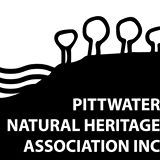
SUNDAY MORNING BIRDWATCHING with PNHA
Would you like to know more about our local birds and explore our bushland reserves? Then join us on one of our bird walks:
21 August, Chiltern Track, Ingleside (birds and wildflowers)
25 September, Irrawong Reserve, North Narrabeen
27 November, Warriewood Wetlands
Most walks start at 7.30 or 8am and last a couple of hours. Bring binoculars and morning tea for afterwards if you like. Contactpnhabirdwatching@gmail.com for details of each walk.
Camden Gasfields Petition
AGL still have 96 coal seam gas production wells in South Western Sydney, surrounding Camden, some between 40m - 200m from family homes and schools.
While the Eastern suburbs, electorates for Mike Baird and Malcolm Turnbull MP, have zero.
As the largest growth center in Sydney there are current plans to build 35,000 new homes as close as 20m from AGLs existing coal seam gas wells.
AGL plans to stop all production in this area by 2023. This is not acceptable. These families do not deserve 7 more years of these horrific health effects. 35,000 new homes in the same area is a health epidemic in the making.
Australian Mothers-Against-Gas started this petition with a single signature, now they need more support to help protect Camden and shut down those wells NOW.
2016 National Landcare Conference and Awards - Registrations Open
June 7: Landcare Australia
We are pleased to announce that registrations are now open for the 2016 National Landcare Conference and Awards, to be held at the Melbourne Convention and Exhibition Centre from 21-23 September 2016.
Themed ‘Collaborative Communities – Landcare in Action’, the 2016 National Landcare Conference and Awards is your opportunity to contribute to, engage with, and learn from your community and peers.
Held over three exciting days, the 2016 National Landcare Conference and Awards will deliver an engaging programme, as well as offer you the opportunity to attend a variety of informative and educational field trips within close proximity to Melbourne CBD. To recognise the hard work and innovation of the Landcare community, the Landcare Awards gala dinner provides you the chance to let your hair down and celebrate the achievements of peers with the announcement of the National Landcare category winners, the People’s Choice Award winner, and the ultimate acknowledgement of the 2016 Bob Hawke Landcare Award and $50,000 prize winner.
We officially welcome Landcarers across the country, who grow our food and protect our environment, to register for the 2016 National Landcare Conference and Awards. The Conference represents the diversity of Australia’s leading volunteer movement, providing an opportunity for all to join in the discussion on how we can build a resilient agricultural and environmental future.
The diverse conference programme focuses on the theme of Collaborative Communities – Landcare in Action, with keynote speeches being delivered by Major General the Honourable Michael Jeffery, AC, AO (Mil), CVO, MC (Retd), as well as Don Bourke, Presenter and Executive Producer of Australia’s beloved Burke’s Backyard.
Register now for your Early Bird discount and save. For further details or to register, go to the official National Landcare Conference website: www.nationallandcareconference.org.au
Nominations open for the 2016 NSW Green Globe Awards
Media release: NSW OEH
Nominations are now open for the 17th Green Globe Awards celebrating NSW's exceptional environmental achievements.
Ian Hunter, Deputy Chief Executive, NSW Office of Environment and Heritage (OEH) said the Green Globe Awards are NSW's biggest sustainability awards, with ten award categories covering a range of resource, business, community and individual sustainability initiatives.
"The Awards are a chance to showcase NSW's green game changers nationally, internationally and celebrate the people behind the successes," Mr Hunter said.
"They provide a platform for participants to showcase innovative work, initiate projects, network and reach new audiences."
Previous winner, Chris Bins of City of Sydney, said their Green Globe Award had opened further opportunities to share their experiences and give them licence to push harder into the new horizons of sustainability.
"We've offered our Green Globe experience as an open invitation for discussion and knowledge sharing," Mr Bins said.
Brookfarm, winner of the 2015 Small Business Sustainability and Premier's Award for Environmental Excellence said since winning both awards they have implemented a rainwater harvesting system and energy management initiatives to meet new environmental certification goals.
Winner of last year's Young Sustainability Champion Award, Seda Hamoud, said her award has given her school Environmental Club an even stronger cross-school component and has allowed for greater membership.
Robin Mellon, Green Globe Award judging panel chair of chairs said the judges are excited to see this year's nominations and how nominees are reducing their environmental impacts in a diverse collection of ways.
"We look forward to seeing how their initiatives are really 'leading the pack' around NSW, Australia and hopefully around the world and how their actions are having a positive effect on businesses, people and communities," Mr Mellon said.
The NSW Green Globe Award winners set the gold standard in becoming a cleaner and greener state.
The Awards will be judged by a panel of independent experts and presented at a gala night at The Art Gallery of New South Wales in late October 2016.
Nominations are open until 11 July 2016. To enter your project, program or nominate, please go to: www.environment.nsw.gov.au/greenglobes

SUNDAY MORNING BIRDWATCHING with PNHA
Would you like to know more about our local birds and explore our bushland reserves? Then join us on one of our bird walks:
21 August, Chiltern Track, Ingleside (birds and wildflowers)
25 September, Irrawong Reserve, North Narrabeen
27 November, Warriewood Wetlands
Most walks start at 7.30 or 8am and last a couple of hours. Bring binoculars and morning tea for afterwards if you like. Contactpnhabirdwatching@gmail.com for details of each walk.
Ballinas Koalas Update
Works on Section 10 Out to Contract Despite Federal Government in Caretaker Mode and Decision Pending
On May 17 the Save Ballina Koalas team were advised from the Federal Environment Minister's office (via EDO) that the review and evaluation process is still underway.
Readers will recall that a huge objection to the Pacific Highway upgrades were concerns that directing this through a vulnerable koala population's habitat (the Ballina 200), when an alternate route had been proposed, with residents both for and against that too, would result in the extinction or at least decimation of this koala colony. The matter was addressed by Federal Minister Greg Hunt, who then required "The NSW Roads and Maritime Services must prepare a Ballina Koala Plan that includes peer reviewed population modelling for the Ballina koalas.
Prior to proceeding with the construction of the 13km, section 10 of the highway upgrade, concerns around the impact of the Ballina koala population need to be addressed."
In February 2016 this Report was finished and submitted - no announcement on this report's findings, apart fro the April 2016 statement above, has yet been released or determined.
In the meantime...
June 20, 2016The Federal Government might be in Caretaker mode but that hasn't stopped NSW's RMS from holding industry briefings which have included multi-million enabling contracts for work associated with Section 10.
Works, apart from 'clearing and grubbing', for kilometres, include:
Woolgoolga to Ballina Upgrade'
From page 14: 'Enabling Works Contracts'Section 10 – Koala RevegetationOut to Tender May 2016Contract Award July 2016Estimated Value: $2m-$3m• Establishment of 130 hectares of Koala habitat revegetation• Creating a new habitat for koalas;• Includes plant supply, planting and maintenance of new habitat• Subject to Ballina Koala Plan requirements
Section 10 – Koala FencingOut to Tender June 2016Contract Award October 2016Estimated Value: $2m-$3m• 10km of various fencing types• Culverts• Clearing and Grubbing• Subject to Ballina Koala Plan requirements
Previously:
Ballina Koala Plan now available for Pacific Highway Upgrade16 February 2016: RMS Media Release
Pacific Highway General Manager Bob Higgins today announced the Ballina Koala Plan and Population Viability Analysis (PVA) prepared for the Woolgoolga to Ballina Pacific Highway upgrade has been endorsed by the Koala Expert Advisory Committee and is now available.
Mr Higgins said the plan and PVA had been submitted to the Federal Minister for the Environment and the Federal Department of the Environment for consideration and approval after months of careful research.
“As part of the conditions of approval, Roads and Maritime Services is required to complete the Ballina Koala Plan and PVA before major work can start on the section between Broadwater and Coolgardie,” he said. “Months of work, including a thorough review by independent experts has led to the preparation and submission of the documents.
“The PVA found extra mitigation measures on existing roads near the project would offset any impact of the upgrade on the local koala population and further proposed mitigation could improve the situation for koalas based on current predictions.
“The study found the Ballina koala population will decline with or without the upgraded highway due to disease, predators and koala deaths on roads other than the highway.
“The upgrade would be fully fenced to prevent animals from entering the road corridor and koala grids would be installed on interchange ramps to stop animal strikes from occurring.
“Additional fencing will also be provided on key sections of Wardell Road near the new highway and the existing Pacific Highway north of Wardell and Coolgardie where the risk of koala strikes is higher.
“About 26 wildlife crossings would also be installed as part of the upgrade, substantially increasing safe crossing points and about 130 hectares of koala feed trees will be planted to provide additional habitat.
“The koala feed trees will be planted early so there can be good growth before the highway opens in 2020.”
Meetings will be held with community groups to discuss the outcomes of the PVA and Ballina Koala Plan.
See the Woolgoolga to Ballina Koala page for more information.
Ballina Koalas protected in Pacific Highway upgrade
Media release: 15 August 2014 - The Hon. Greg Hunt MP, Minister for the EnvironmentToday, I have approved the Pacific Highway Upgrade, Woolgoolga to Ballina, project subject to 26 strict environmental conditions.
The 155km Woolgoolga to Ballina upgrade is Australia's largest regional road infrastructure project.
There has been a high level of public interest in the project, particularly in relation to impacts on the important koala population near Ballina.
I have considered the assessment report from the New South Wales Government, public submissions, the findings of the Ballina Shire koala study, and further koala population modelling that was submitted to me late in the process.
The conditions that I have applied require the NSW Roads and Maritime Services to demonstrate that impacts to the Ballina Koala population will be acceptable, before section 10 of the highway can be undertaken.
The NSW Roads and Maritime Services must prepare a Ballina Koala Plan that includes peer reviewed population modelling for the Ballina koalas.
Prior to proceeding with the construction of the 13km, section 10 of the highway upgrade, concerns around the impact of the Ballina koala population need to be addressed.
For the remaining sections of the upgrade, approval has been given with 26 strict conditions to minimise environmental impacts, including a range of mitigation measures on the proposed route which are critical to avoid impacts to koalas and other threatened species.
The Pacific Highway upgrade will deliver a range of benefits at the national, state, regional and local level including improved safety, reduced travel times, increased freight carrying capacity and reduced freight transport costs, and improved access to regional centres, and connectivity between agricultural and industrial centres.
The project will also provide a direct investment into the economy of $4.4 billion and create up to 4,100 full time construction jobs.BAN THE BAG: NEW SOUTH WALES
An estimated 50 million plastic bags end up in our waterways and marine environment in Australia every year.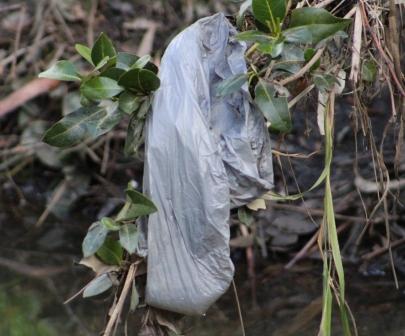
Plastic pollution is killing our marine life. 30% of the world’s turtles and 90% of seabird species have now ingested plastic debris. We have to act now to clean up our oceans.
Petition - Plastic bag in mangroves - Careel Creek, June, 2016
Works on Section 10 Out to Contract Despite Federal Government in Caretaker Mode and Decision Pending
On May 17 the Save Ballina Koalas team were advised from the Federal Environment Minister's office (via EDO) that the review and evaluation process is still underway.
Readers will recall that a huge objection to the Pacific Highway upgrades were concerns that directing this through a vulnerable koala population's habitat (the Ballina 200), when an alternate route had been proposed, with residents both for and against that too, would result in the extinction or at least decimation of this koala colony. The matter was addressed by Federal Minister Greg Hunt, who then required "The NSW Roads and Maritime Services must prepare a Ballina Koala Plan that includes peer reviewed population modelling for the Ballina koalas.

How Floodwaters Can Turn Cars Into Death Traps
June 20, 2016: UNSW by Wilson Da SilvaEngineers at the University of New South Wales (UNSW) have discovered just how easily cars can be washed away by even the smallest currents – making the crossing of floodwaters a dangerous and potentially life-threatening decision
A team at the UNSW Water Research Laboratory has been testing how small and large cars behave when they encounter flash floods, replicating scenarios faced by many stranded motorists, but doing so in an especially configured test tank in Manly Vale, in northern Sydney.
“What was surprising was just how little water it took to make even a large vehicle unstable,” said principal engineer Grantley Smith, who led the research. “They became vulnerable to moving floodwaters once the depth reached the floor of the vehicle. Even in low water depths and slow flow speeds, floodwaters had a powerful enough force to make them float away.”
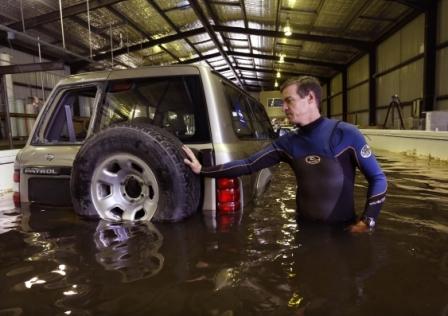
In just 95 cm of water, a 2.5 tonne 4WD can be pushed by hand: Principal engineer Grantley Smith, of the UNSW Water Research Laboratory, led the team that conducted the world first experiments. Photo:Grant Turner/Mediakoo/UNSW
The tests are a world first: previous experiments to understand the force of floodwaters have relied on using vehicle miniatures, rather than actual cars. Even the engineers were surprised how easily cars weighing more than a tonne quickly became buoyant and unstable.
A small car like a Toyota Yaris, weighing 1.05 tonnes, was moved by water only 15 cm deep and with a flow speed of just 3.6 km/h. It completely floats away in 60 cm of water.
Even a 2.5 tonne Nissan Patrol 4WD can be rendered unstable by floodwater 45cm high, and a similar flow speed. Once the water reaches 95 cm, the four-wheel drive can completely float, and needs almost zero force to move it by hand.
By contrast, an able-bodied adult is much more stable in flowing water than the 4WD vehicle.
Part of the reason – modern cars are made so airtight (for comfort reasons) that they more easily float when encountering water. Another factor is that people underestimate the power of a swathe of moving water.
“People don’t realise that even slow-moving water packs a powerful punch,” said Smith. “Water is heavy: each cubic metre weighs about 1,000 kg.“If a house is exposed to floodwaters two metres deep and 20 metres wide – travelling at a steady 1 metre/second – the force is equivalent to being hit by a 40-tonne semitrailer every 15 seconds.”
Three men died recently after being swept away while trying to drive through floodwaters in separate incidents in the ACT, the NSW southern highlands and Sydney's southwest, and the NSW State Emergency Services launched more than 80 rescues of stranded cars.
NSW SES Acting Commissioner Greg Newton said the high number of flood rescues was distressing. “People need to re-think their actions and not drive into floodwater, because by doing this they are not only placing their lives at risk, but the lives of our volunteers who have to go out and rescue them,” he said. “Entering floodwater is the number one cause of death and injury in a flood, so everyone should stay out and stay alive.”
Robert McDonald, Insurance Australia Group (IAG) Road Safety Expert, agreed: “With more storms predicted over coming days, it’s a timely reminder for people to be aware of the dangers of driving through flood water. “Common sense – and now research – says regardless of the size of your car, even a big 4WD can very quickly float like a boat. So the message is very clear – it’s never safe to enter flood water,” McDonald said.
The experiments were funded by UNSW and the NSW State Emergency Service, the NSW Office of Environment and Heritage, with IAG providing the cars.
“The Office of Environment and Heritage co-sponsored this research as part of the NSW government’s ongoing efforts to better understand and manage the devastating impacts of flooding on local communities,” a spokeswoman said. “As fatalities and near misses continue to remind us, floodwaters are dangerous and can be deadly. This research highlights that drivers should avoid even shallow depths of still water.”

New Bacteria Discovered In Australian Ticks
Murdoch University researchers have detected a new species of bacteria in echidna-biting Australian ticks.
The recent discovery was published by Dr Charlotte Oskam, from Murdoch University's Vector & Water-borne Pathogen Research Group (VWBPRG), in the parasitology journal Parasites and Vectors. To date, little has been documented about microorganisms harboured within Australian native ticks or their potential to transmit disease.
The study concentrated on ticks removed from echidnas on Australia's east coast of Australia, with researchers discovering the presence of a Borrelia bacteria species separate to a group of bacteria which causes Lyme disease in the northern hemisphere.
While the new species is genetically related to the Borrelia group causing tick-borne Relapsing Fever (RF) overseas, its discovery has the potential to form its own major bacteria group.
"Just like our native wildlife, the new bacterium discovered is unique to Australia and unique to ticks that bite echidnas," said Dr Oskam.
The new bacterium was found in ticks removed from echidnas in Queensland and New South Wales, but not in Victoria, with Dr Oskam admitting further research was needed to uncover the disease potential and consequences of the bacteria.
"We don't know at this stage whether this new bacterium can cause disease or if this bacterium can be transmitted by ticks. It's too early to say," she said. "Also of note is this type of tick doesn't bite humans – it prefers echidnas – so we need more information about this particular Borrelia. For example, it's present in echidna ticks but can we find it in the echidnas themselves?"
Ticks transmit the most diverse range of animal-to-human pathogens of any arthropod – a major concern to the health and wellbeing of humans, wildlife, livestock and companion animals. For many pathogens transmitted by overseas ticks to wildlife, the animal is rarely affected."But when people go into these environments and get bitten, they can get sick," Dr Oskam explained.
This is why the VWBPRG at Murdoch University is looking at bacteria in native ticks and their wildlife hosts.
"By looking at the wildlife, we can start piece together a view of what could cause illness in humans," added Dr Oskam.
The discovery of the new bacterium in ticks was made possible thanks to next generation sequencing technology, first investigated by PhD student Alex Gofton. Mr Gofton's recent molecular survey of bacteria associated with native Australian human-biting ticks identified a Borrelia related to the RF group removed from an echidna host. This technology enabled Dr Oskam and PhD student, Siew-May Loh, to tailor their research to look specifically at echidna ticks.
Three borreliae have been previously reported in Australia, transmitted ticks associated with cattle, poultry and longhaired rats.
Telleasha L. Greay et al. A survey of ticks (Acari: Ixodidae) of companion animals in Australia. Parasites & Vectors (2016). DOI:10.1186/s13071-016-1480-y Siew-May Loh et al. Novel Borrelia species detected in echidna ticks, Bothriocroton concolor, in Australia. Parasites & Vectors (2016). DOI:10.1186/s13071-016-1627-x 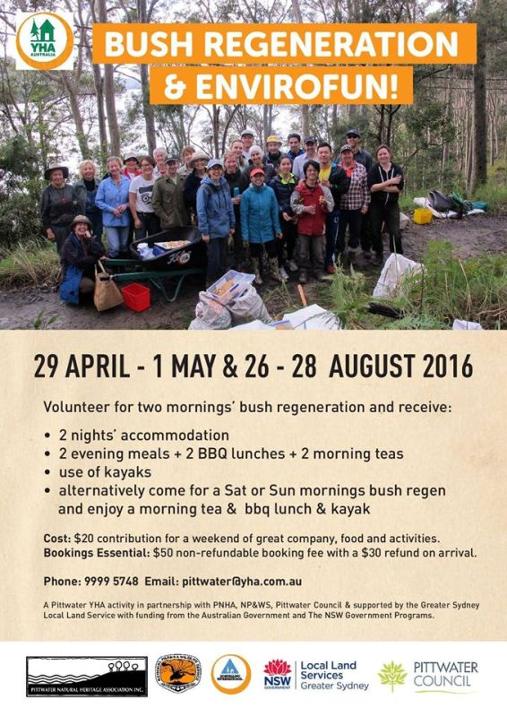

The Australian Bird Feeding & Watering Study
The Australian Bird Feeding and Watering Study is a citizen science initiative being conducted by researchers at Deakin University and Griffith University. Our interests are the interactions people have with birds in their own backyards, as this can have a huge impact on bird diversity and abundance. One of the most common ways people interact with birds is through providing food and water.
Why do we find this interesting? For the simple reason that we do not know how providing food and water might impacts on bird ecology and diversity in Australia. While providing food and water to birds is a popular activity, little is known about what species are attracted to these resources and why people like to provide them. Most importantly we need to understand the ecological and behavioural effects of bird feeding as almost all information from other countries regarding bird feeding simply does not apply here. We acknowledge that feeding of wild birds is an important activity for large numbers of people and that the practice may be a significant way for many to connect with nature.
The Australian Bird Feeding and Watering Study aims to gather quantitative data on the effects of supplementary feeding and providing water for birds and the reasons why people provided food and/or water. In doing so we aim to develop purpose guidelines for people who feed birds to do so with minimum risk to birds.
If you provide food or water for birds and would like to take part in this exciting study, Sign up today! We would love to have you involved
$50 Million More For Environment And Heritage
21 June 2016
The 2016-17 NSW Budget delivers an extra $50 million to protect and preserve the State’s environment and heritage, bringing total funding to a record $1.7 billion, Environment and Heritage Minister Mark Speakman announced today.
This investment will go towards keeping the State’s environmental watchdog strong, the protection and preservation of NSW’s national park estate, preparing and adapting for climate change, Australia’s pre-eminent private land conservation program, clean energy investment and the protection of Aboriginal and other cultural and historic heritage.Mr Speakman said it was a NSW Government priority to support a healthy environment.
“This year’s budget shows the NSW Government puts its money where its mouth is on conservation and environmental protection,” Mr Speakman said.
“The forward estimates include the Government’s commitment to a $240 million investment in private land conservation over five years to help farmers protect and restore high value biodiversity.”
Other Budget highlights include:
Environmental protection• $175 million has been allocated to the NSW Environment Protection Authority (EPA) to ensure it continues to operate as a modern, independent and respected regulator, including:• $67 million towards transforming waste management in NSW and increased education around better waste management practices• $6.2 million to bolster the NSW Government’s response to the Williamtown Royal Australian Air Force Base contamination• $2.8 million towards introducing a container deposit scheme to help deliver the Premier’s priority to reduce litter volume by 40 per cent by 2020• $2.4 million ($10.1 million over five years) allocated for the EPA to address lead contamination and elevated blood lead levels in children in Broken Hill.
Climate change$49 million will be set aside to improve energy productivity, which includes:• $15 million for energy efficiency programs for households including support for people on low incomes• $6 million for energy efficiency programs supporting business• over $9 million for National Energy Market regulation• $2 million for state-wide gas efficiency programs• $1.4 million towards renewable energy programs.• $31 million will be allocated to support councils to develop and implement coastal and floodplain management plans and to restore and protect the NSW coastline and its estuaries.
Biodiversity• An unprecedented investment of $240 million over five years, with up to $15 million in 2016-17, will facilitate strategic biodiversity conservation on private land• A major investment of $16 million this year ($100 million over five years to 2020-21) to protect threatened species across NSW through the expansion of the Saving Our Species program.National parks• $40 million has been allocated to manage fire risks in the State’s national parks• The iconic Royal Coast Track will undergo another $3.7 million in upgrades in the next 12 months plus $5.3 million over following three years, which includes installing a viewing platform at Wedding Cake Rock and expanding the Wattamolla car park.
ParklandsMore than $287 million has been set aside for the State’s public parklands, zoos and gardens to improve community enjoyment, scientific research, education, sport, recreation, leisure and cultural experiences.
This includes the following capital programs:• $46 million in capital expenditure will be set aside to deliver inspiring new visitor experiences at both Taronga Zoo and Western Plains Zoo, and to develop the Taronga Institute of Science and Learning• As part of a $22 million capital program for Western Sydney Parklands, $5 million will be directed to the 200 hectare Bungarribee super park which will include regional play and recreational areas, a bushland corridor, and an outdoor event and entertainment space• More than $17 million in capital investment will be made in Centennial Parklands for upgrading park facilities• $4.7 million will be set aside for the Royal Botanic Garden and Mount Annan and Mount Tomah Botanic Gardens to upgrade amenities and infrastructure, and to create an online booking and customer relationship management system.
Heritage• $48 million to conserve and protect the state’s Aboriginal and other cultural and historic heritage• $8.7 million in capital funding has been allocated to improve public safety, amenities and other infrastructure under the care of the Historic Houses Trust.
Environmental Trust• $100 million has been allocated to the Environmental Trust to increase opportunities for the community, industry and agencies to protect the environment through restoration, research, education and support programs. Sweet Addiction - The Botanic Story of Chocolate: Live at The Calyx
Sweet Addiction is the inaugural exhibition at The Calyx, Sydney's newest attraction. Find out more and book tickets at www.thecalyx.com.au
11 Jun 2016 - 17 Apr 2017, The Calyx, Sydney
See another side of nature and experience its stories in an unexpected way through Sweet Addiction – the botanic story of chocolate.
Sweet Addiction is the first exhibition to open in The Calyx, a world-class horticultural space and Sydney’s newest must-see attraction.
An exhibition you can taste, touch, see, hear and smell, this is an opportunity to experience chocolate like never before.
From the depths of a South American rainforest, journey through chocolate plantations, ancient history, a Lindt chocolate mill, and a delightful chocolatier room. See the awe-inspiring interior green wall – the southern hemisphere’s largest contiguous green wall complete with over 18,000 plants! And learn amazing things you never knew about chocolate.
Sweet Addiction is designed as a self-guided 45 minute experience. Suitable for chocaholics of all ages. Tickets on sale now, pre-purchase online to save!
The exhibition opens 11 June with interactive chocolate-themed events taking place throughout the exhibition period.
Watch the video to get your first taste of the exhibition.
______________
Some history of this wonderful garden which celebrates 200 years this June is in: The Royal Botanical Garden Sydney Celebrates 200 Years in 2016
Sweet Addiction - The Botanic Story of Chocolate: Live at The Calyx
Sweet Addiction is the inaugural exhibition at The Calyx, Sydney's newest attraction. Find out more and book tickets at www.thecalyx.com.au
11 Jun 2016 - 17 Apr 2017, The Calyx, Sydney
See another side of nature and experience its stories in an unexpected way through Sweet Addiction – the botanic story of chocolate.
Sweet Addiction is the first exhibition to open in The Calyx, a world-class horticultural space and Sydney’s newest must-see attraction.
An exhibition you can taste, touch, see, hear and smell, this is an opportunity to experience chocolate like never before.
From the depths of a South American rainforest, journey through chocolate plantations, ancient history, a Lindt chocolate mill, and a delightful chocolatier room. See the awe-inspiring interior green wall – the southern hemisphere’s largest contiguous green wall complete with over 18,000 plants! And learn amazing things you never knew about chocolate.
Sweet Addiction is designed as a self-guided 45 minute experience. Suitable for chocaholics of all ages. Tickets on sale now, pre-purchase online to save!
The exhibition opens 11 June with interactive chocolate-themed events taking place throughout the exhibition period.
Watch the video to get your first taste of the exhibition.
______________
Some history of this wonderful garden which celebrates 200 years this June is in: The Royal Botanical Garden Sydney Celebrates 200 Years in 2016
Exhausting Our Green Shipping Options
June 24, 2016Scientists in Singapore have developed a revolutionary emissions abatement system that removes pollutants from exhaust gas to help the international shipping industry meet ambitious emissions targets.
In 2013, the International Maritime Organization (IMO) introduced new regulations to reduce exhaust emissions attributed to the shipping industry. Shipping is responsible for around 90% of global trade and the effect of reducing emissions such as sulphur oxides (SOx), nitrous oxides (NOx), particulate matter and greenhouse gases such as carbon dioxide (CO2) will have a huge impact on global totals.
Researchers from the Agency for Science, Technology and Research Institute of High Performance Computing (IHPC) together with Sembcorp Marine Ltd and Ecospec Technology Pte Ltd have risen to the challenge of finding ways to meet the IMO's new emissions targets.
The team from Sembcorp Marine Ltd and Ecospec Technology Pte Ltd has developed an exhaust gas treatment system, called cSOx, which removes SOx and CO2 from ships' diesel engine and boiler exhaust emissions. It uses ultra-low-frequency electromagnetic waves to treat seawater, thereby optimising the system's ability to absorb sulphur dioxide and CO2.
Leveraging on the high performance computing capability of IHPC and its computational fluid dynamics (CFD) expertise, the team gained a better understanding of the flow of exhaust gases within the system and optimised the design without expensive and time-consuming physical experiments. Verification of the CFD analysis was carried out with site measurements, and this, in turn, enabled design improvements to be developed for better performance.
In early 2015, a memorandum of understanding was signed by IHPC, Sembcorp Marine Ltd and the University of Glasgow to collaborate to make ships more eco-friendly. Plans include designing vessels with improved hydrodynamics for better fuel efficiency and further enhancing the exhaust gas cleaning and ballast water treatment systems developed by Sembcorp Marine Ltd and Ecospec Technology Pte Ltd. Shipping is currently responsible for approximately 3 million tons of sulphur dioxide emissions, 4.5 million tons of nitrogen dioxide emissions and 900 million tons of greenhouse gas emissions yearly. Technology such as the cSOx exhaust gas cleaning system may soon begin to reduce shipping emissions and give us hope for a more sustainable future.
Moving forward, the team plans to utilize the IHPC computational fluid dynamics model to evaluate the scaled-up cSOx exhaust gas cleaning system's geometric parameters for better performance.
The above is reprinted from materials provided by The Agency for Science, Technology and Research (A*STAR). 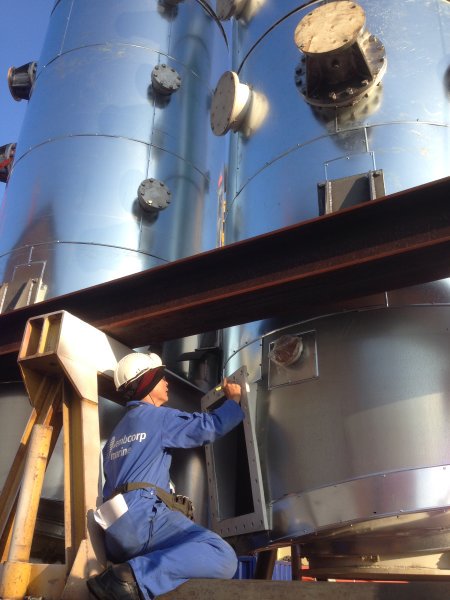
Shipping is currently responsible for approximately 3 million tons of sulphur dioxide emissions, 4.5 million tons of nitrogen dioxide emissions and 900 million tons of greenhouse gas emissions yearly.Credit: Agency for Science, Technology and Research

Sunburn Sensor Among Top Techs At Sydney Nanomedicine Conference
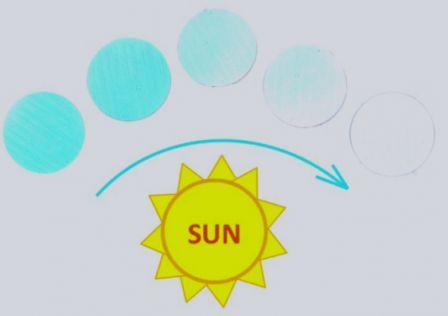
$1.6 Billion Building Boom For NSW Hospitals
- $99 million towards the Westmead Hospital redevelopment (including the car park)
- $167 million towards the Acute Services Building at St George Hospital
- $133 million towards the Gosford Hospital redevelopment (including the car park)
- $25 million towards the next stage of the Dubbo Hospitalredevelopment
- $12 million towards the Tweed Hospital redevelopment
- $75 million towards the next stage of the Lismore Hospitalredevelopment
- $73 million to continue building NSW Ambulance superstationsacross Sydney
- $126 million for Information Communication Technology (ICT)and digital enhancement
- Almost $90 million for carparks at Westmead, Royal Prince Alfred, Gosford and Blacktown hospitals and to plan a car park at Tweed Hospital
- $41 million to continue the roll-out of Multipurpose Services (MPSs) at Barham, Bonalbo, Molong and Walgett and to plan and commence new MPSs at Coolah, Tocumwal and Holbrook
- $26 million towards the Armidale Hospital redevelopment
- $4 million towards the new Forensic Pathology and NSW Coroner’s Court at Lidcombe
- $10 million towards the Neonatal Intensive Care Unit (NICU) at John Hunter Hospital in Newcastle
- $11 million to plan future capital works at Campbelltown, Coffs Harbour, Concord, Inverell, Hornsby, Mudgee and Nepean hospitals
Record $22 Billion Health Budget Boosts Frontline Care
'Holy Grail' Of Breast Cancer Prevention In High-Risk Women May Be In Sight
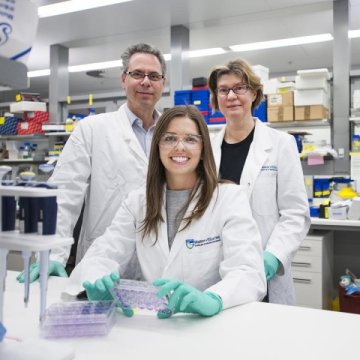
Mice fed more fiber have less severe food allergies
Creation Of A Leading Centre For Visual Art And Design
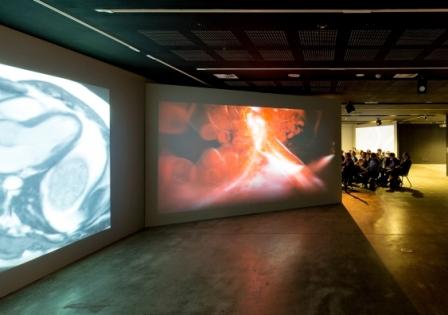
Proposed Young Offenders Regulation 2016
Fish Out Of Water Are More Common Than Thought
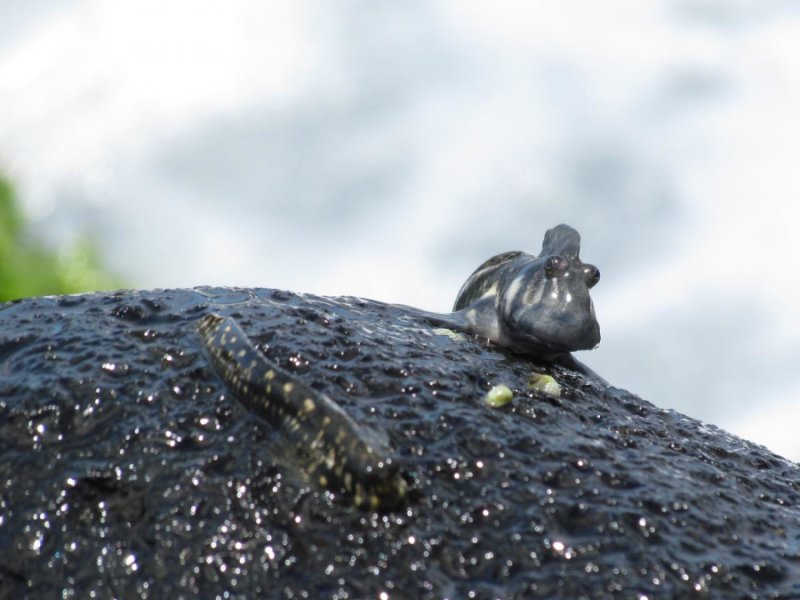
Making Computers Reason And Learn By Analogy
Caribbean Sea Acts Like A Whistle And Can Be 'Heard' From Space
Present-Day Subsurface Ocean On Pluto?

RedEye Could Let Your Phone See 24-7
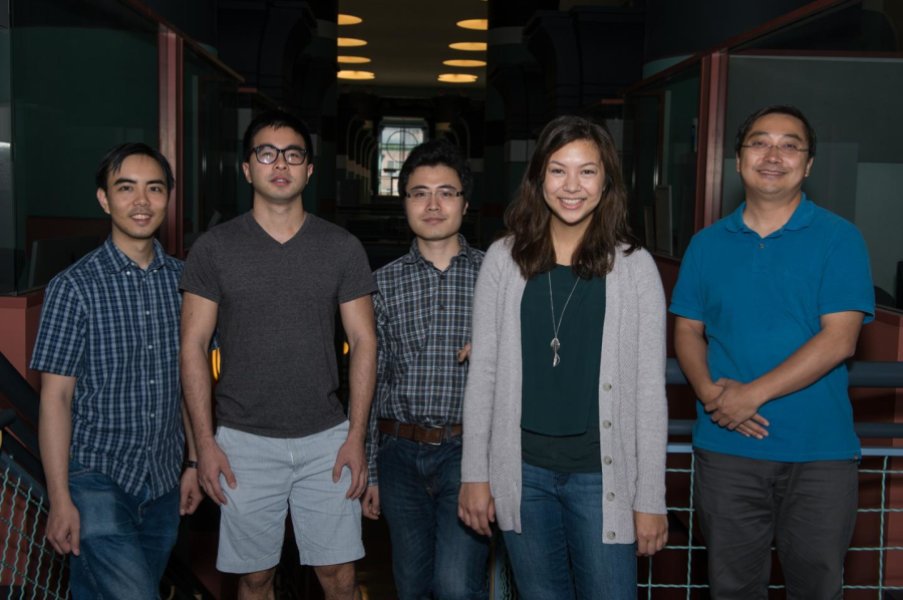
Inspirational Men - David Unaipon
 David Unaipon (born David Ngunaitponi) (28 September 1872 – 7 February 1967) was a well-known Indigenous Australian of the Ngarrindjeri people, a preacher, inventor and writer. Unaipon's contribution to Australian society helped to break many Indigenous Australian stereotypes, and he is featured on the Australian $50 note in commemoration.
David Unaipon (born David Ngunaitponi) (28 September 1872 – 7 February 1967) was a well-known Indigenous Australian of the Ngarrindjeri people, a preacher, inventor and writer. Unaipon's contribution to Australian society helped to break many Indigenous Australian stereotypes, and he is featured on the Australian $50 note in commemoration.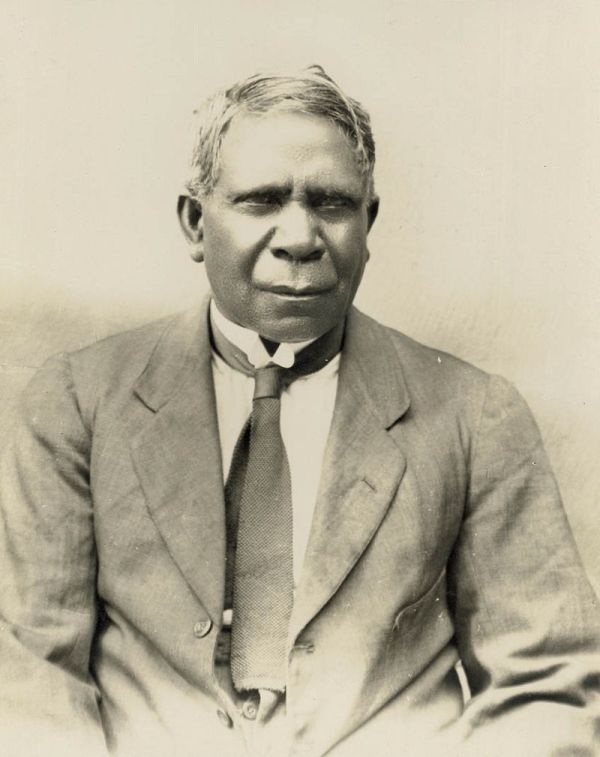 Other inventions included a centrifugal motor, a multi-radial wheel and a mechanical propulsion device. He was alsoknown as the Australian Leonardo da Vinci for his mechanical ideas, which included pre World War I drawings for a helicopter design based on the principle of the boomerang and his research into the polarisation of light and also spent much of his life attempting to achieve perpetual motion.
Other inventions included a centrifugal motor, a multi-radial wheel and a mechanical propulsion device. He was alsoknown as the Australian Leonardo da Vinci for his mechanical ideas, which included pre World War I drawings for a helicopter design based on the principle of the boomerang and his research into the polarisation of light and also spent much of his life attempting to achieve perpetual motion.Inspirational Women - Maria Sklodowska Curie
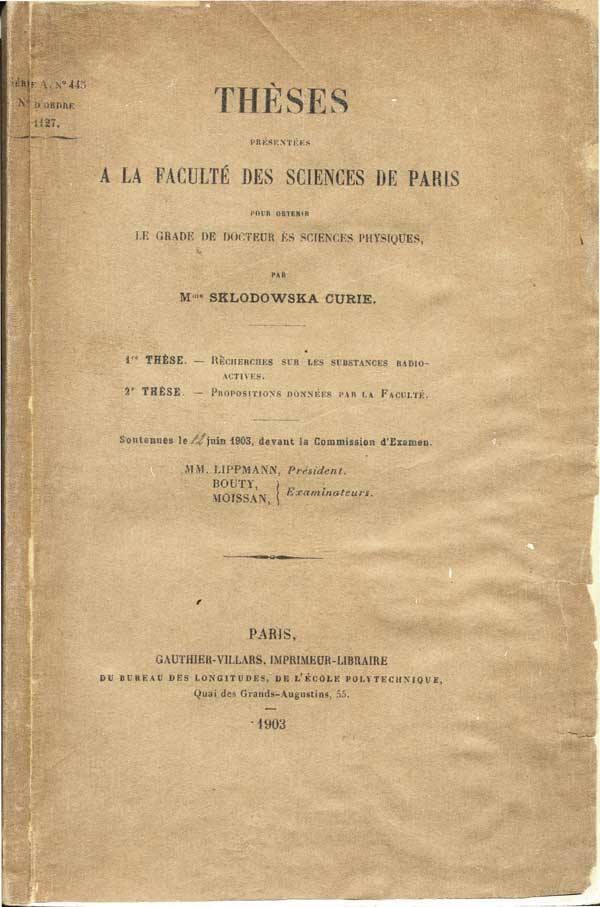 On June 25th in 1903, Marie Curie defended her doctoral thesis on radioactive substances – at Université de la Sorbonne in Paris – becoming the first woman in France to receive a doctoral degree.
On June 25th in 1903, Marie Curie defended her doctoral thesis on radioactive substances – at Université de la Sorbonne in Paris – becoming the first woman in France to receive a doctoral degree.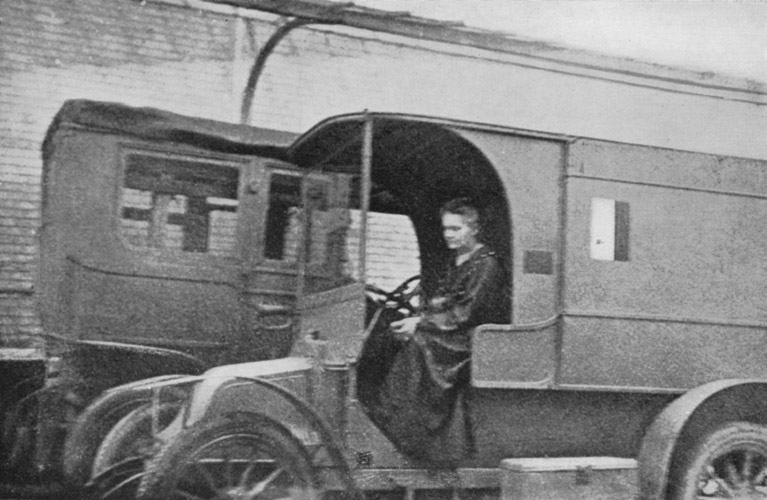
_and_Marie_Sklodowska_Curie_(1867-1934),_c._1903_(4405627519).jpg?timestamp=1466858987803)
Disclaimer: These articles are not intended to provide medical advice, diagnosis or treatment. Views expressed here do not necessarily reflect those of Pittwater Online News or its staff.